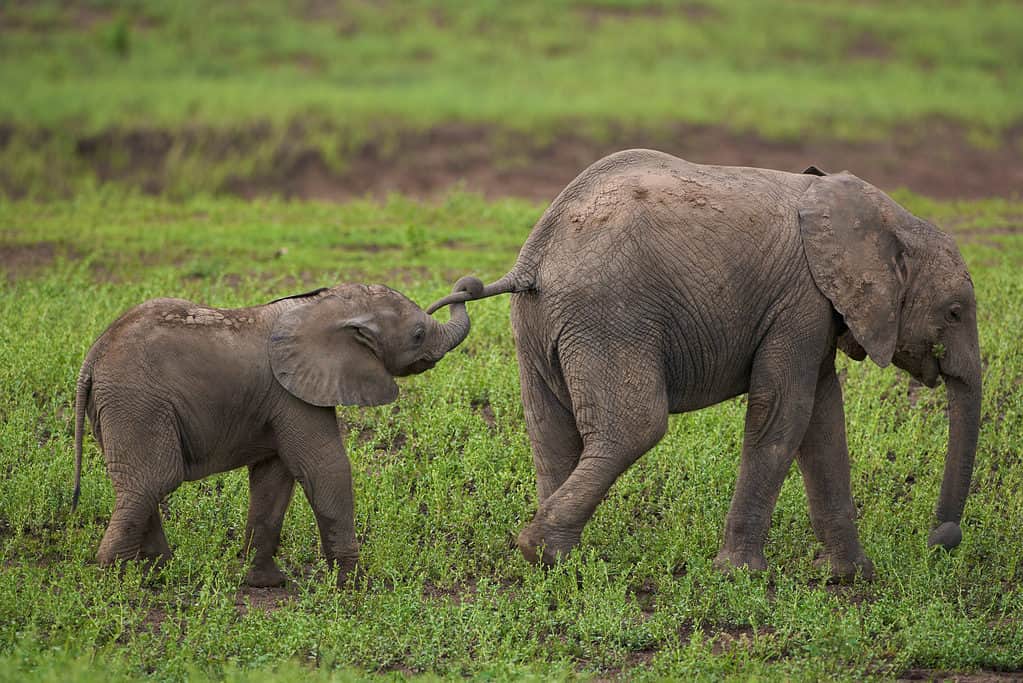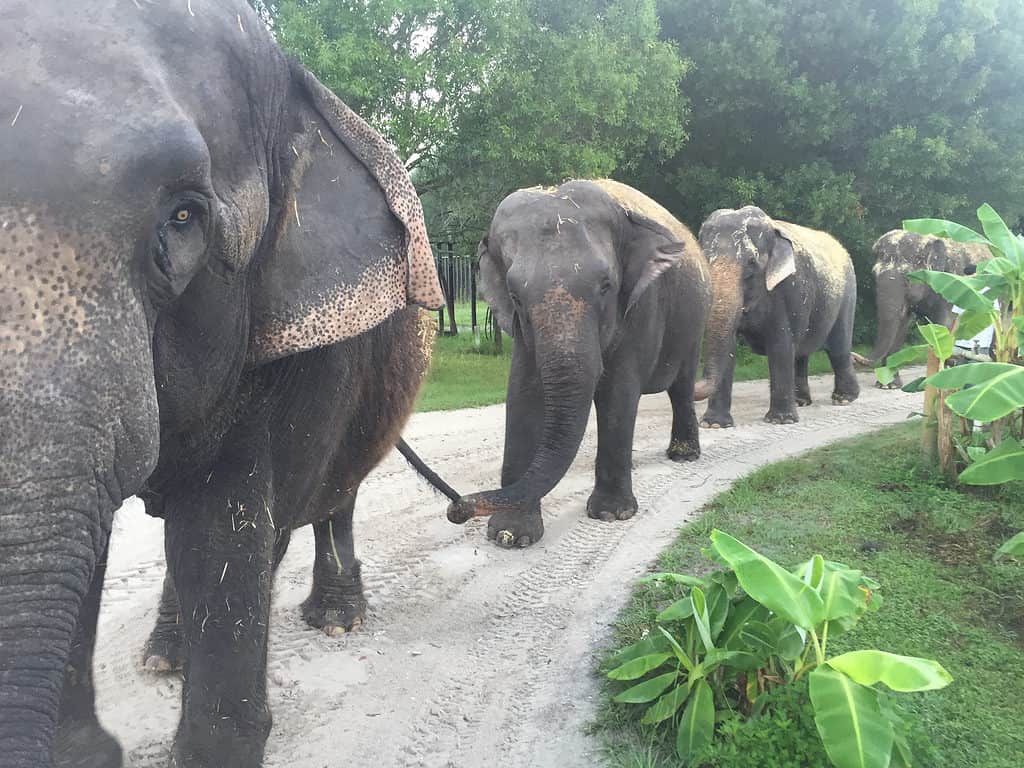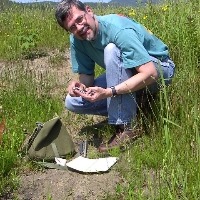Elephants are social animals known for communicating and showing affection by touching their noses or wagging their tails. Every body part is essential to convey the correct message, especially since they don’t speak like humans.
Given elephants’ strong affinity for community and herd life, it’s critical to keep each herd member connected, especially for young elephants who are just beginning to learn how to live in the wild. Is this why elephants pull their tails when they walk?
Do elephants really grab each other’s tails?

©Johan W. Elzenga/Shutterstock.com
Elephants hold their tails for the same reasons we hold hands — to help, support, or show love. Elephant tail hugging is more prevalent in young elephants and young adults. However, older elephants may occasionally be seen grabbing other elephants by their tails. Some of these examples are when one male elephant tries to slow down the other in an attempt to win a fight. Elephants develop their strength and fighting skills through play. During evasion games, baby elephants may grab each other’s tail to slow them down.
Elephants also grab each other’s tails when they are frightened. They often cross rivers with strong currents or rivers with predators such as crocodiles. To protect weakened elephants and ensure that every member of the herd comes out safely, the tails can be arranged in single file. Usually, the matriarch (matriarch) takes the lead, while each elephant props the elephant’s tail in front of it.
What’s so special about an elephant’s tail?

© Elephant Erik/Shutterstock.com
An elephant’s tail plays a multifunctional role in everyday life. From swatting flies to warning naughty children or warning cattle of danger, the elephant tail is one of a kind!
An elephant’s tail can be raised in fear or excitement. It is common for elephants to playfully grab another elephant’s tail. Their tails also come in handy as their danger alert.
Every elephant has a different tail. In fact, tusks, ears, and tails can all be used to identify a particular individual. Some wild elephants have abnormally long tails, abnormally short tails, or are bitten off by hyenas as calves.
Elephants are not particularly hairy animals. The strong, rough and black tail hairs on their tails, which can grow up to 100 cm (39 in) long, are excellent at repelling flies, but are an exception to the rule. They can also use their tails as hands in different ways. Thanks to this, they are able to move and grasp.
Why does the elephant grab its mother’s tail?

Young elephants may grab their mother’s tail with their trunks to keep up with other mothers protecting them. When they feel threatened, babies will grab their mother’s tail, like a frightened child grabbing a parent’s hand.
Most importantly, the best way to ensure a baby elephant doesn’t get left behind in the chaos that elephant stampedes often cause is to grab a family member by the tail. When a calf clings to its mother, a gentle tail flap can be used to communicate between mother and baby. This is very practical because it is very difficult for huge elephants to turn around every time they want to check on their offspring.
How do you know if an elephant is happy?
Elephants will flick their tails like happy dogs, horn loudly, and sometimes wrap their trunks around excited subjects.
Elephant reunions are always full of drama and joy. This usually happens when family members who left the herd return. Usually, the happy elephants will start calling each other excitedly by rumbling and honking. Their expressions clearly indicate their excitement as they will start dripping temporal gland fluid. Their intertwined trunks, clattering tusks, and flapping ears make rumbling, noisy tangles when clustered together. Such a reunion creates a noisy yet lovely symphony of horns, rumbles, screams and growls.

How do elephants express love?
For elephants, love begins at birth. The calves are raised and cared for by the matriarch and other female members of the herd. It is common to see older elephants using their trunks to direct the smaller elephants and make sure they keep up with the herd. This affection persists after the elephants have grown up, especially when a member of the herd becomes ill or dies.
Elephants are very expressive, which is evident from their vocalizations and excited movements. You’ll usually hear a loud horn honking, and a dog-like excited tail wagging. They often extend these displays of love to people they’ve become accustomed to, or people they’re happy to see.
Interestingly, elephants mourn the death of companions and herd members. Elephants have been known to keep returning to where the dead elephant lay long after they die. Matriarchs have also been known to mourn their calf long after their death.

I am broadly interested in how human activities influence the ability of wildlife to persist in the modified environments that we create.
Specifically, my research investigates how the configuration and composition of landscapes influence the movement and population dynamics of forest birds. Both natural and human-derived fragmenting of habitat can influence where birds settle, how they access the resources they need to survive and reproduce, and these factors in turn affect population demographics. Most recently, I have been studying the ability of individuals to move through and utilize forested areas which have been modified through timber harvest as they seek out resources for the breeding and postfledging phases. As well I am working in collaboration with Parks Canada scientists to examine in the influence of high density moose populations on forest bird communities in Gros Morne National Park. Many of my projects are conducted in collaboration or consultation with representatives of industry and government agencies, seeking to improve the management and sustainability of natural resource extraction.











